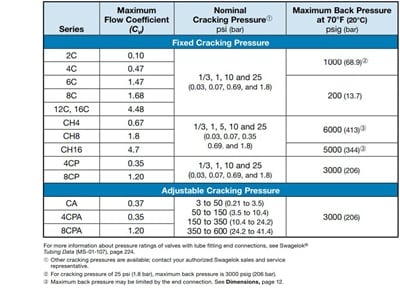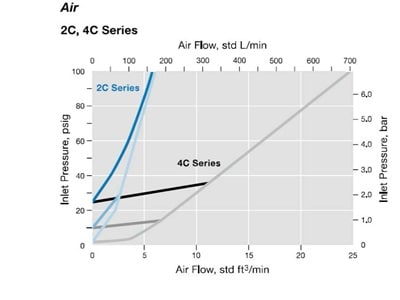Minimizing System Errors: Ensure Fluid System Performance with Proper Check Valve Selection

Ensure Fluid System Performance with Proper Check Valve Selection
Check valves are seemingly one of the easiest valves to specify and use. Before we delve into the troubleshooting of check valves, let’s take a moment to review check valve terminology.

When specifying a check valve, you must select line size, connection type (tube fitting, threads, flanged or sanitary), materials of construction, elastomer (if the valve type has one – fluorocarbon FKM, Kalrez etc), cracking pressure and flow capacity. The three most common failure modes of check valves are compatibility issues, fouling and chatter.
First we will consider compatibility. The check valve is obviously exposed to your process media. When checking for compatibility, remember that temperature can play an important role. An elastomer, plastic or metal may be compatible at one temperature but not at another. Be certain to have a good understanding of what the valve will be exposed to in temperature, concentration, possible wash down or steam out of your lines. There are a number of compatibility guides available on line which can help guide your selection. Your valve provider may offer suggestions as to what may work. Another source is the chemical provider. Remember though the guides and vendor’s suggestions are just that suggestions. When a check valve is exposed to media that is non compatible, you slowly (or quickly) affect the seal, causing check valve failure. Your process begins to leak by the check valve.
The second common problem is chattering, or the repeated opening and closing of the valve. This is usually a sign that the valve is oversized for the application or that a non-optimal cracking pressure has been selected. Typically check valves are sized to match line size. Chatter can be more than an annoyance – it can affect the flow of your system and cause premature wear and failure of your sealing material. Traditionally, if you have a 1/2” line, you select a 1/2” check valve. While this may generally work, the practice may also lead to problems.
Check valves should be selected for their flow capacity – meaning you match the flow capacity of the check valve to your actual flow. Most manufacturers provide some type of flow capacity rating, either a Cv rating (Cv is an industry standard for measuring the flow capacity of a valve – the higher the Cv, the higher the flow capacity) for the valve, flow charts or both (See above).

Finally, let’s consider fouling of the check valve. Debris, PTFE tape or other contaminants can become trapped between the seat of the check valve and the sealing surface. This can cause the check valve to leak. Protecting a check valve with a filter is generally a good idea.
Check valves are a necessary part of fluid systems. Taking a moment to ensure their proper selection can make a difference in how well your fluid system performs.
